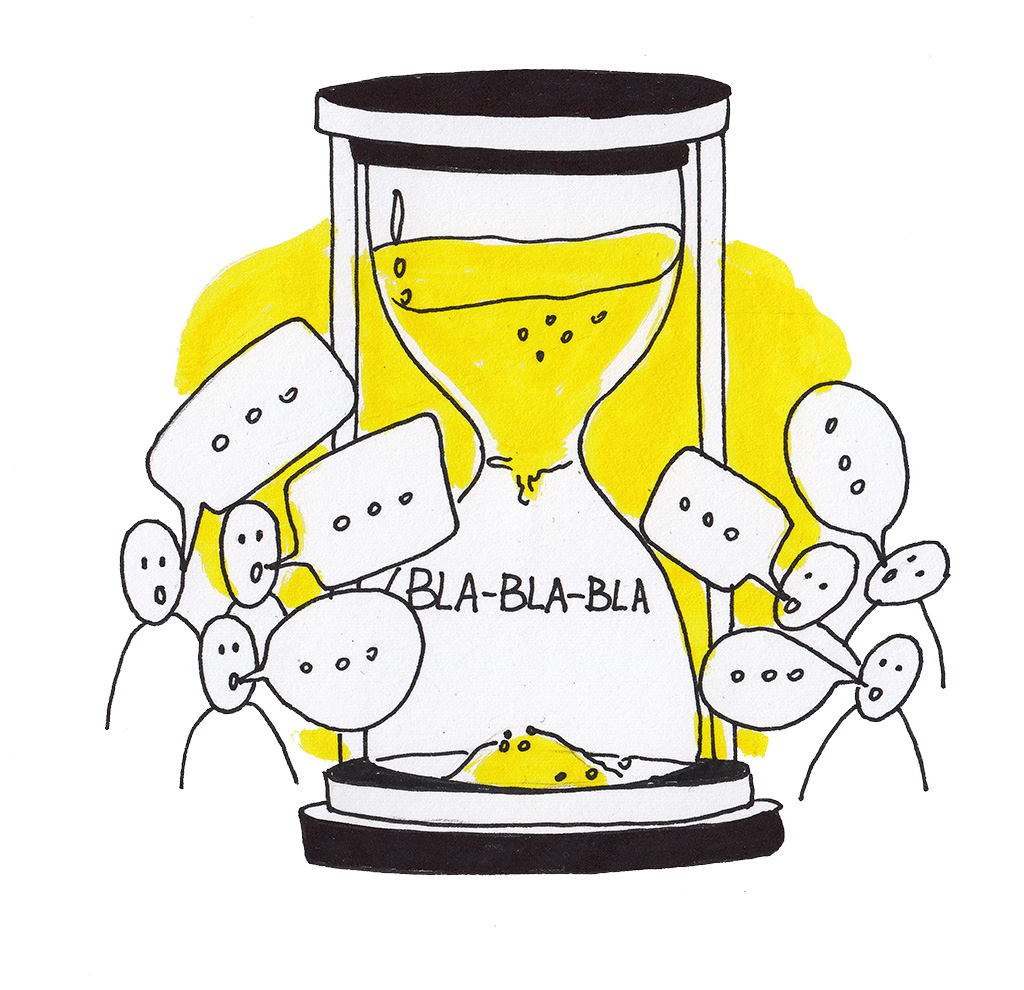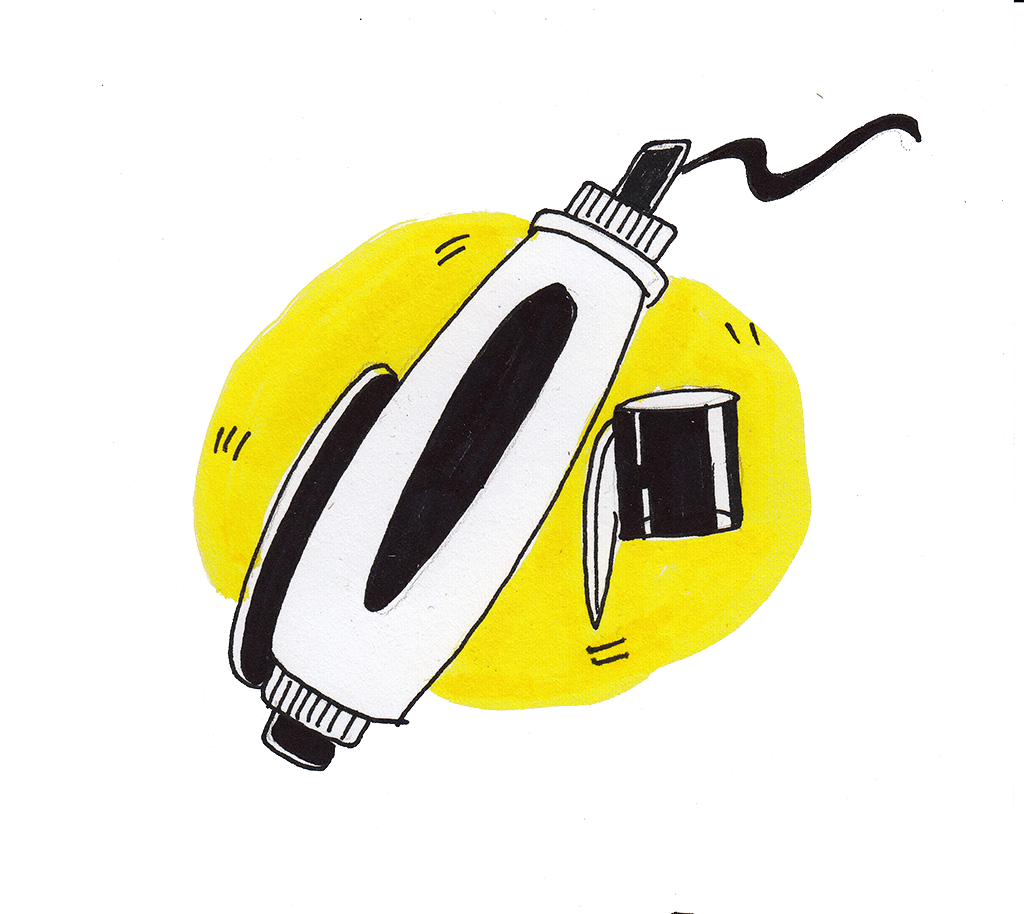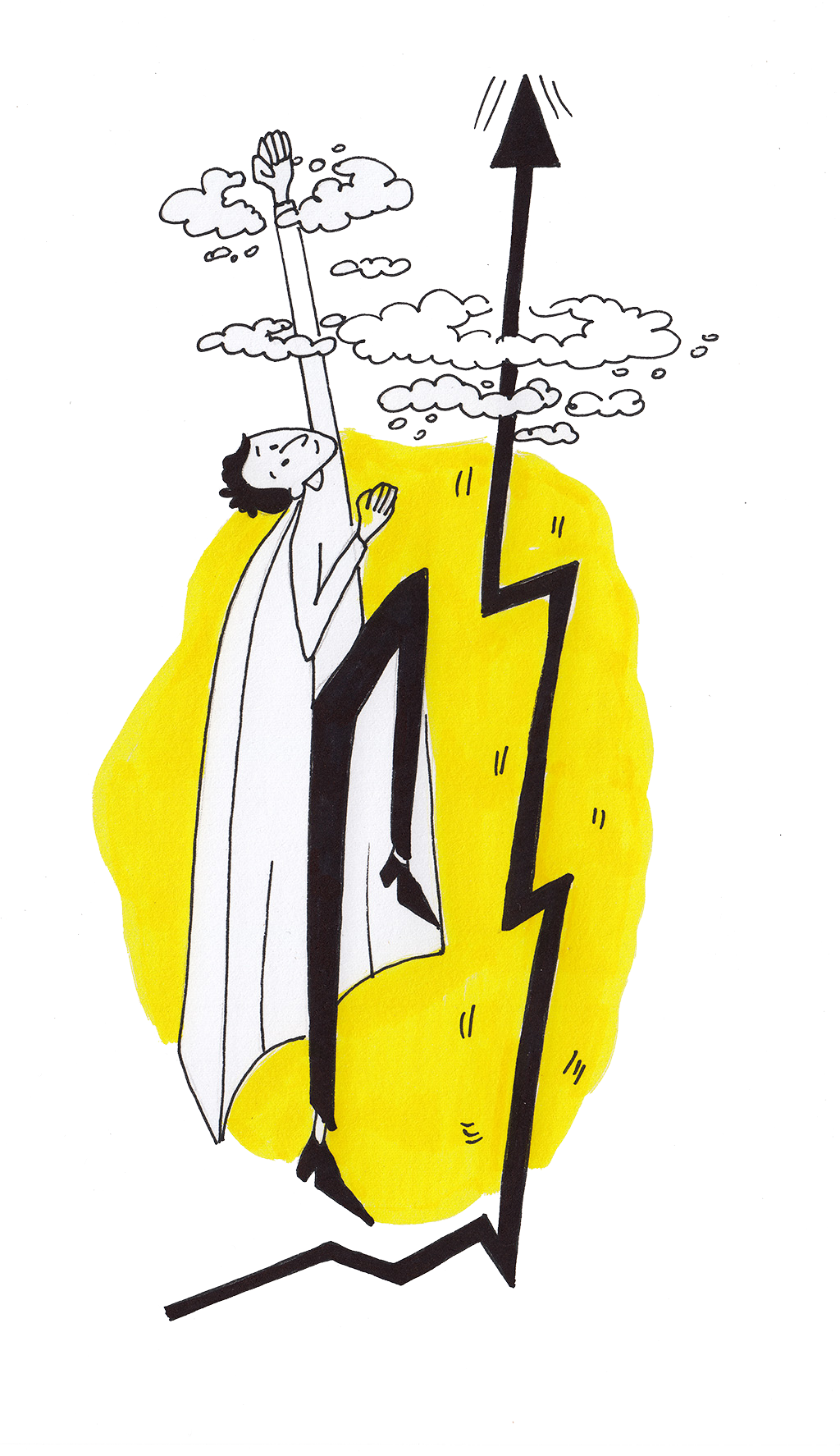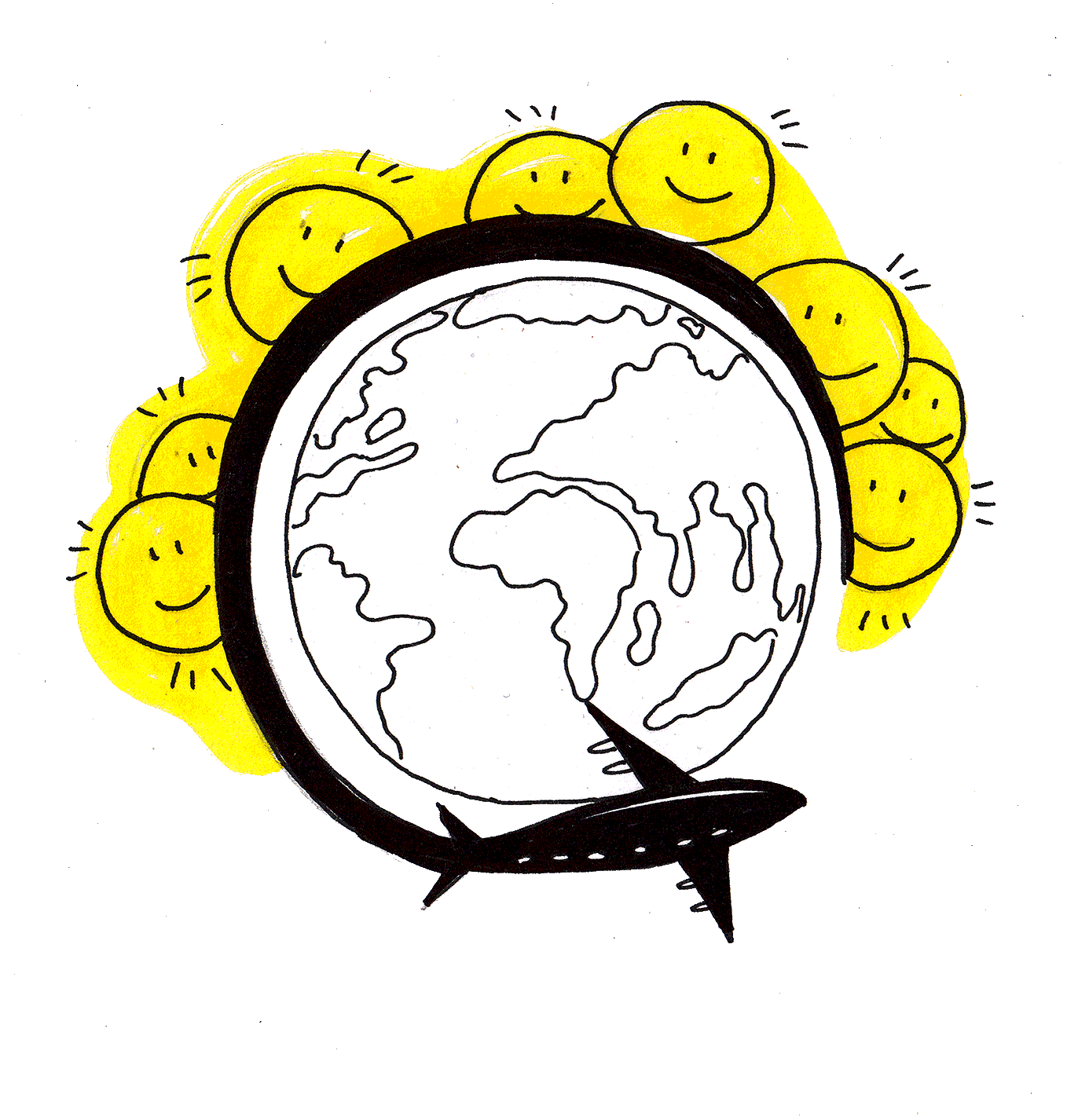Is it possible to solve a problem without discussing it?
Solution-Focused Approach for Managers and not only for them.
Victoria Spashchenko

Some people find problems evil, while others believe that problems are valuable experiences leading to changes for better.
No matter what you think one thing is obvious — problems are part of our lives and we are good at discussing them. How do we do that?
No matter what you think one thing is obvious — problems are part of our lives and we are good at discussing them. How do we do that?
Usually so:
Why did it happen?
What caused the problem?
Who is to blame for what has happened?
How can we fix the situation?
What do we need to solve the problem?
What caused the problem?
Who is to blame for what has happened?
How can we fix the situation?
What do we need to solve the problem?

By discussing your problem in this way, you waste your time and energy on something that you DO NOT like and what you wish to avoid! (often feeling helpless).
And, actually, .... you delay with the beginning of necessary changes!
Is it possible to solve a problem without discussing it?
Yes! → Learn more
And, actually, .... you delay with the beginning of necessary changes!
Is it possible to solve a problem without discussing it?
Yes! → Learn more






Do not discuss problems - discuss the solutions!
Imagine your project team is late with one of the tasks and gathers to discuss the problem. Instead of a detailed description of the unfortunate situation, investigation of causes, search for perpetrators and ways to "fix the situation" try the Solution-Focused Approach:
"How do we want it to be?" — Describe the preferred change that you LIKE
and feel good about
and feel good about
Start your discussion with the question

start to develop your path
path to the desired future using Solution-Focused Questions






and


Solution-Focused Questions
When we would have achieved what we want, what would be different (in our work, life, in the project)? What benefits would it give us? (by answering these questions we start to realize the positive potential and outcomes of the desired change and motivate ourselves to action)
1
What do we have already / still? (we find out what is already / still working)
2
Which of our previous experiences could be useful and helpful to move towards the goal? (we activate our strengths and make use of helpful past experience)
3
What are the first signs that the situation is developing in the desired direction? (we plan small steps to the desired changes)
4

Let us compare
Gathering information about the problem. Discussion of the causes of the problem. Investigation into what does not work. Pointing out to weaknesses and mistakes. Dissatisfaction, Despair. Demotivation.
The feeling of guilt — how could it happen?! Narrows discussion to the problem field. Problem Detailing (Analysis)
The feeling of guilt — how could it happen?! Narrows discussion to the problem field. Problem Detailing (Analysis)

Problem Talk
Solution Talk
Solutions are limited and dictated by the need to avoid an unwanted scenario.
Developing a vision of the desired solution. Discussion of the preferred future.
Discovering strengths and positive potential of the situation.
Review of what has worked before / is still working well.
Any future is possible. The decisions and steps are guided by desire to act and positive energy.
Thus, discussion of the problem and discussion
of solutions have different, often opposing focuses, energies and results.
of solutions have different, often opposing focuses, energies and results.
Збір інформації про проблему
Обговорення причин проблем
Констатація недоліків – що не працює?
Пошуки винуватих і помилок
Невдоволеність, розпач
Почуття вини – як так можна було?!
Обговорення причин проблем
Констатація недоліків – що не працює?
Пошуки винуватих і помилок
Невдоволеність, розпач
Почуття вини – як так можна було?!
Hope, Confidence. Motivation.
Curiosity — how could it be better?
Curiosity — how could it be better?
Expands the discussion to increase opportunities.
Constructing a New Reality (Synthesis)

Experience SF Approach to Solve Your Problem
Take a piece of paper and a pen.
State your problem
State your problem
And now, consistently answer the following questions:

• What do you want? What is your best hope?
• Imagine that this problem has already been solved, what is different now? What benefits has it given to you?
• What are you motivated to do to achieve the goal?
• What do you already have?
• Who can help you to achieve what you want?
• What are the first signs that you are moving in the chosen direction?
• Imagine that this problem has already been solved, what is different now? What benefits has it given to you?
• What are you motivated to do to achieve the goal?
• What do you already have?
• Who can help you to achieve what you want?
• What are the first signs that you are moving in the chosen direction?
Victoria Spashchenko:
Where and when I apply
the SF approach. Some words
of my professional background and People and organisations
I have been working with.
Where and when I apply
the SF approach. Some words
of my professional background and People and organisations
I have been working with.

I apply the SF Approach in many different situations because it's a universal instrument.
Professionally I apply it during my
1. coaching
2. training on management, leadership, communication, cross-cultural interactions
3. strategic sessions
4. Facilitation and moderation
Professionally I apply it during my
1. coaching
2. training on management, leadership, communication, cross-cultural interactions
3. strategic sessions
4. Facilitation and moderation
My professional background is diverse and includes 20+ years of extensive managerian experience in both, international/local business and public sector. in different areas, such as international trade, public education, catering, international development, media, legal services, chemical industry. The posts I held at different times included PR Manager/Director, Financial Viability Director, International Relations Director, Project Officer, Business Development Director.
I hold Executive MBA from IBR, Institute of International Business Relations (Steinbeis University, Germany).
I hold Executive MBA from IBR, Institute of International Business Relations (Steinbeis University, Germany).
I work with top managers, business owners and high potential teams helping them to explore and design their preferred changes and take decisions towards their desired future.
The areas of my expertise are changes in a solution-focused way and effective management & communication of multi-cultural teams.
I am an enthusiastic promoter of Bridging Communication and a strong advocate of Solution-Focused Approach.
The areas of my expertise are changes in a solution-focused way and effective management & communication of multi-cultural teams.
I am an enthusiastic promoter of Bridging Communication and a strong advocate of Solution-Focused Approach.
I believe that
every person or organization have been going through their own specific processes. And they know (or feel) better what they need and want and they always have enough resources to solve their problems. Sometimes they need me as a part of their solution).
Sometimes I have an impression that people and organizations think of themselves worse that they are. That's why I think of them better than they think of themselves).
Majority of people and organizations see their "limitations" and "shortcomings" but often are less aware of their high potential. And Solution-Focused communication allows for healthier dialogues within and between us.
People and organizations are in constant move, change and development. They are looking for and aspiring to something new and ... different. That's why we are so curious to explore and discover new opportunities widening our comfort zones.
every person or organization have been going through their own specific processes. And they know (or feel) better what they need and want and they always have enough resources to solve their problems. Sometimes they need me as a part of their solution).
Sometimes I have an impression that people and organizations think of themselves worse that they are. That's why I think of them better than they think of themselves).
Majority of people and organizations see their "limitations" and "shortcomings" but often are less aware of their high potential. And Solution-Focused communication allows for healthier dialogues within and between us.
People and organizations are in constant move, change and development. They are looking for and aspiring to something new and ... different. That's why we are so curious to explore and discover new opportunities widening our comfort zones.
Why is it better to discuss solutions and not problems?
Because we are ready and able to do much more for what we
WANT TO GET/ACHIEVE
(against what we are trying to avoid)
WANT TO GET/ACHIEVE
(against what we are trying to avoid)

This channel is for managers, their teams, and all those who have decided not to waste any more time on endless problem talks but, instead, to learn the language of Solution-Focused communication and to dynamically move toward their preferred future.
This is a place to experiment with better questions for ourselves and others.
Problems expire when we re-direct our energy towards what is wanted and act to make our desired changes a new reality!
This is a place to experiment with better questions for ourselves and others.
Problems expire when we re-direct our energy towards what is wanted and act to make our desired changes a new reality!
Solution Talk on YouTube

Books
250 UAH + delivery
WOwW-school
SF for teachers, parents and more (only availible in ukrainian)
300 UAH + delivery
How to solve problems without discussing them
SF for managers and more
5 EUR
#war_thoughts
Unfiltered and Raw Reflections on Recent russian Agression Against Ukraine. (English Edition)
Moving from Problem to Solution
This guide invites readers to experience Solution-Focused thinking and communication.
Take your first step towards SF
Get a chapter of the book-block note
"How to Solve Problems without Discussing Them.
Solution-Focused Approach for Managers and not Only for Them" right now!
"How to Solve Problems without Discussing Them.
Solution-Focused Approach for Managers and not Only for Them" right now!
Залишить свої контакти
